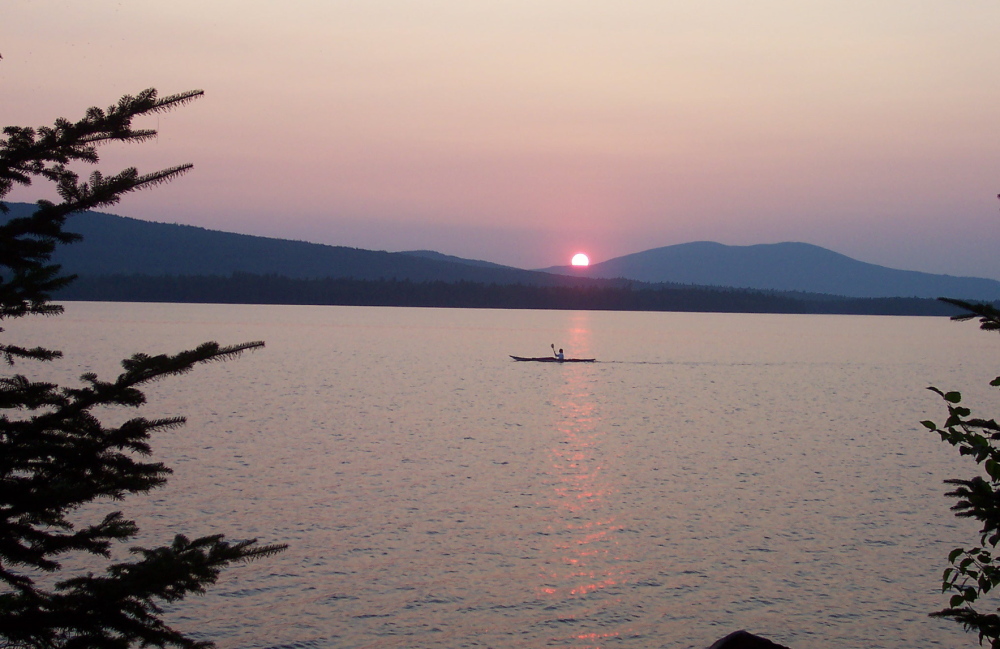Any of us who have taken a kayaking safety course will remember the stern admonition of our mentors: Never paddle alone.
Well, I’m here to tell you we were all done a disservice if the warning was given without the following caveat: Unless you are competent, confident and well prepared.
I say this because of the value of developing the ability to handle alone whatever surprises you might confront on an excursion, which will make you a more valuable member of a group, and the benefit of learning to launch, recover and land on your own.
And to miss out on the sheer, unfettered, satisfying delight of an early-morning solitary paddle on a Maine pond while being entertained by the calls of a pair of loons, or waking a basking seal on a warm Penobscot Bay ledge when you’re the only human in sight, is to fail to appreciate much of what’s so wonderful about an invigorating paddle.
So as we prepare for six months of fun on the water, let’s think about what makes a solo paddle so special and, equally important, everything we need to remember to make our trip just as safe as possible.
Perhaps the best thing about paddling alone is you can change your departure time, itinerary and route on a moment’s notice. You completely control your schedule and there’s something very liberating about that.
You can cut your trip short or extend it on a whim. You can idly watch a mother osprey teaching her fledglings how to fish for as long as you want; you can lie leisurely on a beach listening to only the sound of the surf; and you can select the perfect spot to pitch your tent for the night – or several nights if you decide.
The downside, of course, is you miss the friendly camaraderie of like-minded outdoors lovers and, for me, the toughest thing is that when you see the perfect sunset, or see a Minke whale surfacing not much more than an arm’s length from your boat, or discover to your surprise the undisturbed stretch of white sand beach you’d never seen before, there’s no one with you to share the special moment.
When you’re paddling alone, at the very least you always should know exactly where you are and that someone on land knows your intentions, and have a way of communicating with them if your plans change.
You need to be prepared for unexpected immersion in water that can be pretty unforgiving, especially in the early part of the kayaking season. The ocean’s around 40 degrees this time of year and many of our spring-fed ponds can be almost as cold.
And we all know about hypothermia and the short amount of time we can expect to survive in frigid temperatures.
Dress for immersion, always wear your PFD, and never set out without both a pump and a paddle float.
Wayne Horodowich, the founder of the University of Sea Kayaking, has been teaching kayakers for some 30 years, and I’m pleased to count him as a kindred spirit when it comes to solo kayaking. We both contribute material to Atlantic Coastal Kayaker magazine, and in a recent issue he listed the things every one of us should have before we set off alone:
• Reliable self-recovery skills
• Familiarity with our intended route, either from experience, a thorough study of available maps and charts, or the advice of trusted friends
• The skill to handle a variety of weather and water conditions
• Solo launching and landing skills
• Directional awareness (navigation skills, compass and charts)
•The ability and willingness to change the itinerary as needed to adapt to changing conditions
• Knowledge of anticipated weather conditions from the most recent forecast
• A float plan filed with friends, including a call to them when you’re off the water
• A spare paddle
• A signaling kit with VHF radio and/or cell phone
• A repair kit
• Emergency equipment (food, drink, spare clothes, etc.)
Paddling alone may not be for everyone, just as kayaking in a group isn’t everyone’s cup of tea. There’s plenty of room for all of us.
The most important thing is to get out there and safely enjoy it. Don’t be intimidated and understand it’s never too late to start
Perhaps you’ll be encouraged to know I didn’t even buy my first sea kayak until I was over 70.
John Christie is a former ski racer and ski area manager and owner, a ski historian and member of the Maine Ski Hall of Fame. He and his son, Josh, write columns on alternating weeks. He can be reached at:
jchristie@fairpoint.net
Send questions/comments to the editors.



Success. Please wait for the page to reload. If the page does not reload within 5 seconds, please refresh the page.
Enter your email and password to access comments.
Hi, to comment on stories you must . This profile is in addition to your subscription and website login.
Already have a commenting profile? .
Invalid username/password.
Please check your email to confirm and complete your registration.
Only subscribers are eligible to post comments. Please subscribe or login first for digital access. Here’s why.
Use the form below to reset your password. When you've submitted your account email, we will send an email with a reset code.